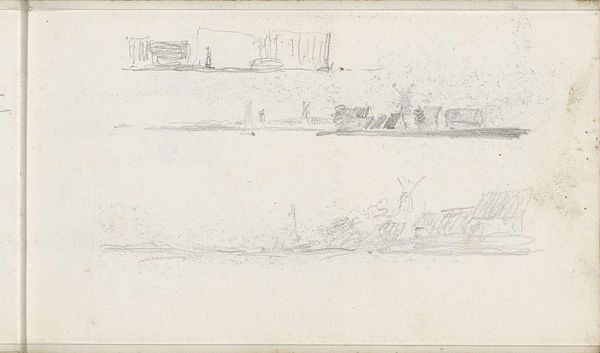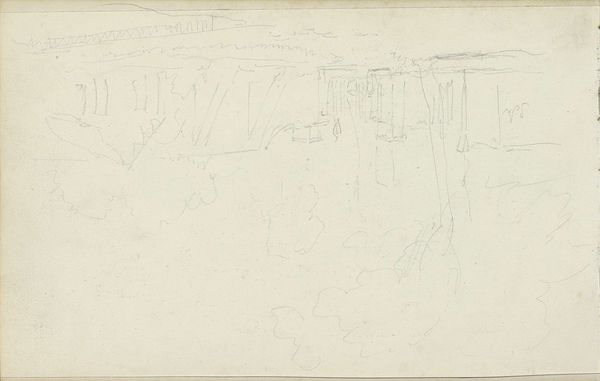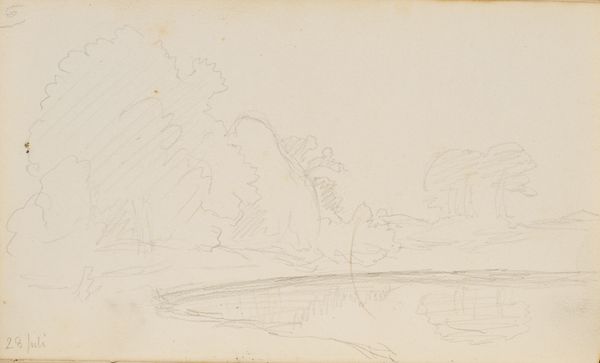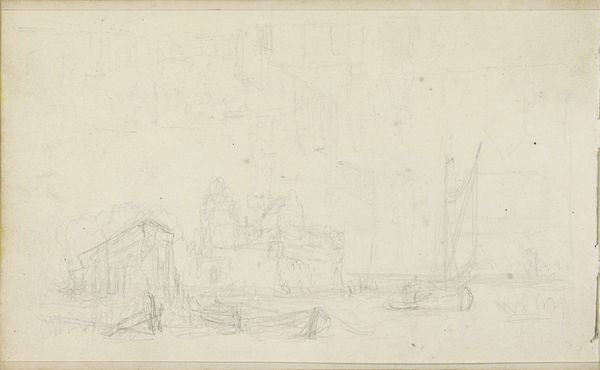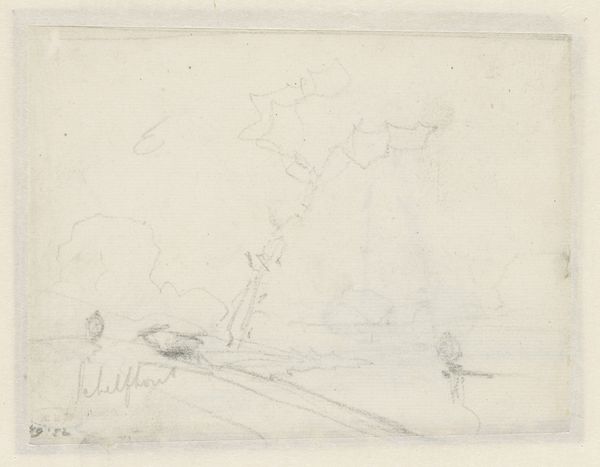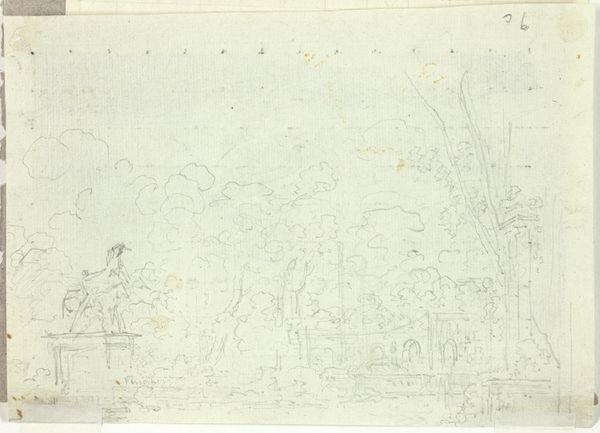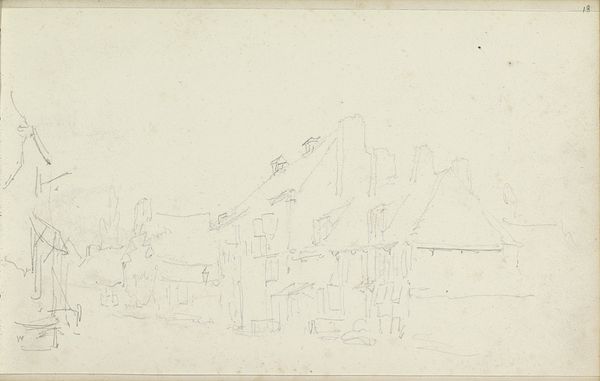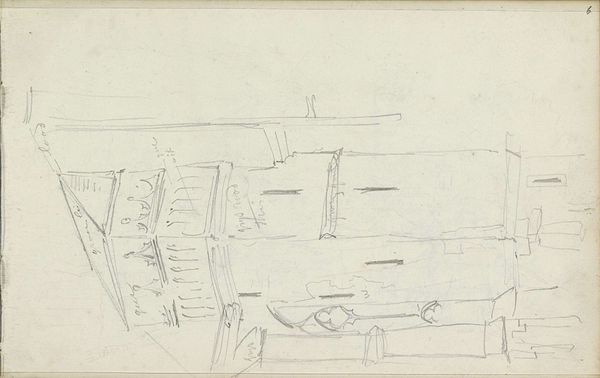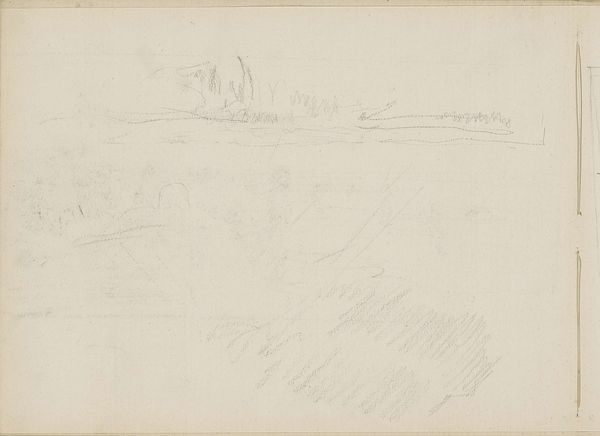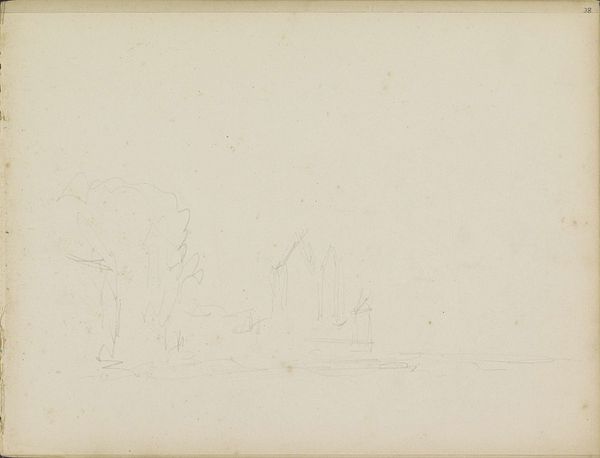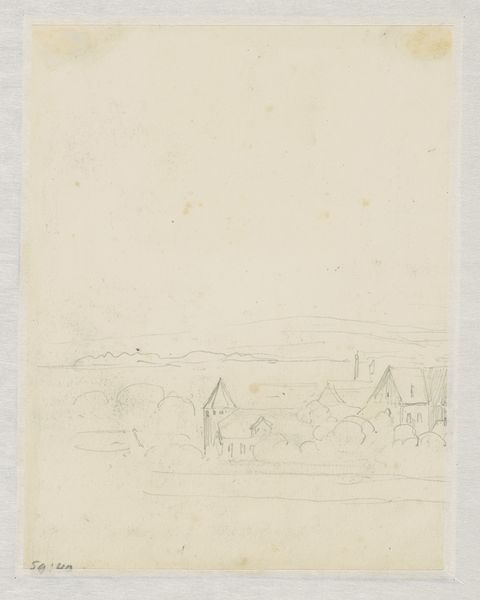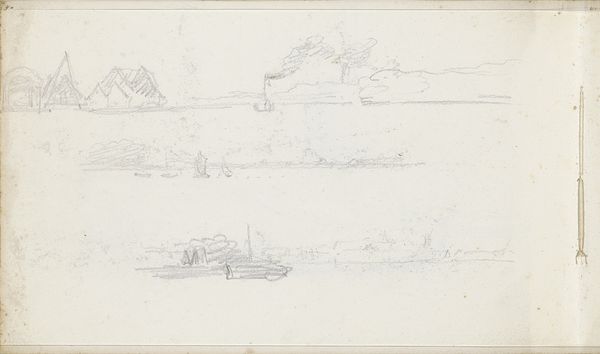
drawing, paper, pencil
#
drawing
#
impressionism
#
landscape
#
figuration
#
paper
#
pencil
#
line
Copyright: Rijks Museum: Open Domain
Editor: This is "Straatlantaarn lang een weg," a pencil and paper drawing from sometime between 1828 and 1897 by Adrianus Eversen. The lines are so faint; it's like glimpsing a memory. What do you see in this piece? Curator: For me, the starkness of the materials – simple pencil on paper – forces us to consider the means of production. Eversen's choice isn’t arbitrary. How does the easy access to paper and pencils democratize art-making, allowing for spontaneous documentation of urban life? This isn't a grand oil painting for a wealthy patron, but something much more immediate. Editor: That’s interesting. It does feel almost like a sketch from life. Curator: Exactly. The “impressionistic” tag is relevant too. Eversen seems concerned with capturing a fleeting moment. So, how does that quickness impact the representation of labor within this urban landscape? Who are the unseen workers responsible for maintaining the street and its infrastructure, for instance? Are they excluded from the “impression?” Editor: I hadn’t considered that. I was focusing on the formal qualities, the landscape... the impression. But thinking about who is *not* represented changes my perception of it completely. Curator: Material conditions and representation are inextricably linked. This work prompts us to investigate whose stories are prioritized through these sketches and why. Think of the materials’ cost, transportation and accessibility during the era – where did this paper come from, and who had access to it? Editor: This gives me a new lens for looking at art. I often just see the final image, never really questioning its creation and context on such a material level. Curator: That's precisely it. Art isn't created in a vacuum. It’s entangled within broader networks of material and social production, consumption, and power.
Comments
No comments
Be the first to comment and join the conversation on the ultimate creative platform.
